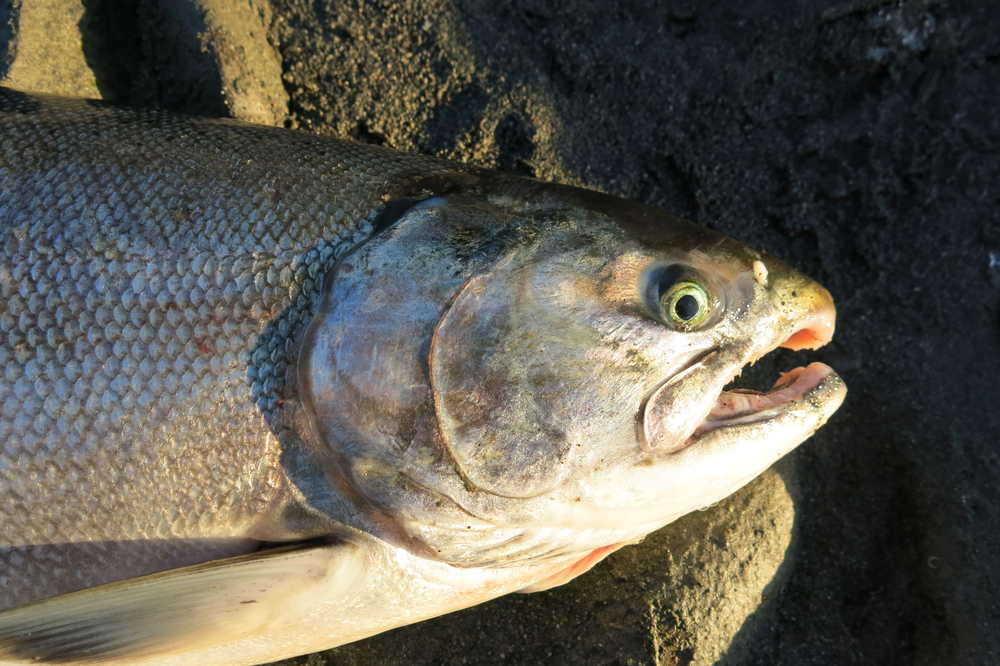We all know the Chinook is the undisputed king and sockeye salmon fill our freezers, but I don’t believe Oncorhynchus Kisutch, or the silver salmon, ever truly receives the respect it is due. And I’m not sure why. After all, what’s not to love? These fish grow large (the state record is 26 pounds), they readily chase gaudy flies and giant spoons, and they hit with the punch of George Foreman and fight with the abandon of a runaway freight train.
Sure, out of the water they bruise easily, lose scales, and are slightly more delicate than most other salmon species. It’s one reason they fetch a lower price than reds or kings in the commercial market. In the water, however, or on the end of the line, they are every bit the powerhouse, and on the table they are just as delicious as any of their more coveted cousins. So, with the silver season closing at the end of this month, I figured what better time to pay homage to this amazing fish.
If you haven’t guessed by now, I love the silver salmon. And I can pinpoint exactly when this adoration began. It was on one of the first fly-outs I’d ever taken. Excited enough to simply be landing on a beach on the west side of Cook Inlet with five buddies, once I initially spotted the mouth of the gin-clear creek we’d be fishing, I could hardly contain myself. There, in the first of many deep pockets lay the outline of at least 20 coho, fresh from the ocean. New to fly fishing, I’d tied up a boxful of exotic flies, all kinds of colorful leeches and streamers that I’d been dying to try. We’d need to hurry and set up camp in order to get some fishing in before dark.
My excitement, however, as we began hauling our gear over a rise in the marsh grass, turned slightly toward trepidation. Suddenly we were confronted by a small sign, its bold white letters emblazoned over the dark silhouette of a bruin: WARNING—EXTREME BEAR DANGER; CAMPING NOT RECOMMENDED IN THIS AREA. They weren’t kidding. Gaping tracks were dug into the mud-flats surrounding the creek. And there, across the river, almost as if on cue, was a mama Grizzly with two yearling cubs. Later, as I walked up the creek, after making camp in a stand of nearby spruce, I understood why the bears were here; it was the same reason we were, the fish.
Each deep hole, like the first, was literally clogged with them, an army en masse , kicking up an enormous wake as they paraded up and down. I’ll never forget laying a bunny leech over the restless mob, waiting for it to sink before slowly stripping line, amazed that one actually took notice. The whole drama played out before me like a slow-motion scene from an action thriller: the fish turning, stalking, and finally striking. And this was by no means any ordinary hit. It was the embodiment of ferociousness, no mistaking this amazing creature’s power as it bolted upstream and down, breaking the surface repeatedly and stirring the other residents of the hole into a frenzy. I only caught two fish that night, but despite a fitful sleep, interrupted by dreams of lumbering ursine phantoms, I knew the next day was going to be epic. I was hooked.
After this, of course, I began seeking out Oncorhynchus Kisutch. Another memorable occasion years later was on a clear-water tributary of the Kustatan River. Again, I found myself casting to the dark shapes of marauding silvers. Despite having much more experience by then, I still had to quell the sudden urgency and impatience that overcame me. All I could do was take a deep breath and try to contain myself as I began to cast. Wanting to attempt something new, I had tied a series of Pollywogs or Wogs for short, crazy pink and chartreuse monstrosities made with spun deer hair and designed to fish silvers on the surface. My first cast, perhaps fraught with a few jitters, landed a bit flat, starting the water to boil, fish scattering. It was obvious that this might take a little finesse.
So I moved slightly downstream in an absurd attempt to fool the same fish again. I laid the Wog out once more. They didn’t scatter, so I cast again. On this pass a fish emerged out of the depths. As I watched from the bank high above, the silver followed with each strip of the fly, across the entire surface of the stream before finally, at the very last minute, rising and taking my offering in an enormous gulp. It was a heart stopping scene that would be repeated many times throughout the day.
It is also a scene I have been lucky enough to replay on several occasions on my home river, the Kenai. As the water drops each fall, at times the silvers will gather in the shallows and you can actually get out of the boat and stalk them, a lot like bonefishing on the flats of the Bahamas, except, of course, you are bundled up in waders rather than wearing shorts.
While my preference might be kings on the grill, and sockeye for the smoker, I think I would just as soon have a silver on the end of my line. For there is simply no mistaking this salmon’s willingness to strike, nor its propensity for aerobatics, and so I must agree, as artist Ray Troll proclaims above one of his outlandish fish caricatures, there simply “ain’t no ho like a coho.”
Dave Atcheson’s latest book is Dead Reckoning: Navigating a Life on the Last Frontier, Courting Tragedy on its High Seas.” He is also the author of the guidebook Fishing Alaska’s Kenai Peninsula, and National Geographic’s Hidden Alaska, Bristol Bay and Beyond. For more info: www.daveatcheson.com.

